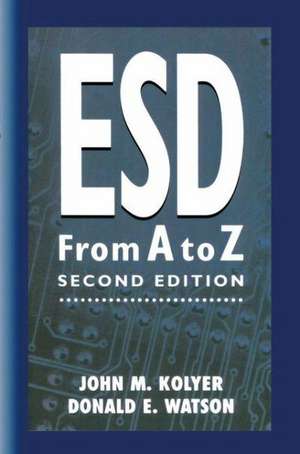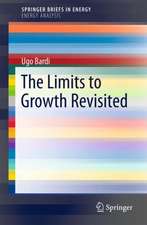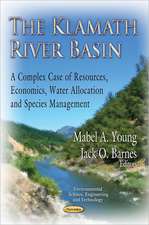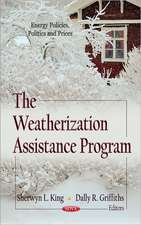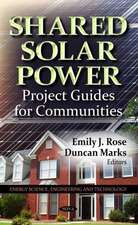Desert Development: Man and Technology in Sparselands: GeoJournal Library, cartea 4
Editat de Yehuda Gradusen Limba Engleză Paperback – 21 ian 2012
Din seria GeoJournal Library
- 15%
 Preț: 642.51 lei
Preț: 642.51 lei - 15%
 Preț: 632.70 lei
Preț: 632.70 lei -
 Preț: 396.78 lei
Preț: 396.78 lei - 18%
 Preț: 948.92 lei
Preț: 948.92 lei -
 Preț: 430.59 lei
Preț: 430.59 lei - 18%
 Preț: 899.69 lei
Preț: 899.69 lei - 15%
 Preț: 581.79 lei
Preț: 581.79 lei - 18%
 Preț: 938.34 lei
Preț: 938.34 lei - 18%
 Preț: 888.80 lei
Preț: 888.80 lei - 15%
 Preț: 703.85 lei
Preț: 703.85 lei - 18%
 Preț: 890.68 lei
Preț: 890.68 lei - 24%
 Preț: 777.65 lei
Preț: 777.65 lei -
 Preț: 400.65 lei
Preț: 400.65 lei - 18%
 Preț: 785.55 lei
Preț: 785.55 lei - 18%
 Preț: 946.55 lei
Preț: 946.55 lei - 15%
 Preț: 661.02 lei
Preț: 661.02 lei - 18%
 Preț: 945.79 lei
Preț: 945.79 lei - 15%
 Preț: 637.28 lei
Preț: 637.28 lei - 15%
 Preț: 637.59 lei
Preț: 637.59 lei - 15%
 Preț: 637.46 lei
Preț: 637.46 lei - 15%
 Preț: 635.31 lei
Preț: 635.31 lei - 20%
 Preț: 568.44 lei
Preț: 568.44 lei - 15%
 Preț: 645.79 lei
Preț: 645.79 lei - 20%
 Preț: 569.86 lei
Preț: 569.86 lei - 15%
 Preț: 651.99 lei
Preț: 651.99 lei - 15%
 Preț: 639.41 lei
Preț: 639.41 lei - 15%
 Preț: 643.48 lei
Preț: 643.48 lei - 15%
 Preț: 663.60 lei
Preț: 663.60 lei - 15%
 Preț: 651.99 lei
Preț: 651.99 lei - 15%
 Preț: 651.02 lei
Preț: 651.02 lei -
 Preț: 390.63 lei
Preț: 390.63 lei -
 Preț: 395.63 lei
Preț: 395.63 lei
Preț: 646.94 lei
Preț vechi: 761.10 lei
-15% Nou
Puncte Express: 970
Preț estimativ în valută:
123.81€ • 134.44$ • 103.100£
123.81€ • 134.44$ • 103.100£
Carte tipărită la comandă
Livrare economică 22 aprilie-06 mai
Preluare comenzi: 021 569.72.76
Specificații
ISBN-13: 9789401088824
ISBN-10: 9401088829
Pagini: 344
Ilustrații: 340 p.
Dimensiuni: 178 x 254 x 18 mm
Greutate: 0.6 kg
Ediția:Softcover reprint of the original 1st ed. 1985
Editura: SPRINGER NETHERLANDS
Colecția Springer
Seria GeoJournal Library
Locul publicării:Dordrecht, Netherlands
ISBN-10: 9401088829
Pagini: 344
Ilustrații: 340 p.
Dimensiuni: 178 x 254 x 18 mm
Greutate: 0.6 kg
Ediția:Softcover reprint of the original 1st ed. 1985
Editura: SPRINGER NETHERLANDS
Colecția Springer
Seria GeoJournal Library
Locul publicării:Dordrecht, Netherlands
Public țintă
ResearchCuprins
I: Viewpoints.- Arid Zone Development: An Appraisal towards the End of the Twentieth Century.- Social Theory Environmental Degradation.- The Political Burden of Spareseland Development: Some International Consistencies.- II: The Built Environment.- From Preconceived to Responsive Planning: Cases of Settlement Design in Arid Environments.- Planning for Comfort in Hot Dry Climatic Regions.- Desert Architecture — The Architecture of the Extremes.- III: Provision of Services in Sparselands.- The Provision of Public Transit Services in the Arid Environment.- Health Services in Sparsely Settled Areas.- Delivering Essential Public Services to Arid Zone Nomads.- High Technology Alternatives for Educational Systems in Sparsely Settled Zones: The Case of the IsraeliDesert.- IV: High Technology In Desert Areas.- Desert Agriculture — Past and Future.- Desert Dune Sand and Its Potential for Modern Agricultural Development.- Remote Sensing for Arid Zone Development.- Potential Impacts of Telecommunications on the Economic Activities in Sparsely Populated Regions.- V: Economic Potential and Development.- The Development of Sparsely Populated Arid Regions: An Integrative Analysis with Application to the Negev.- The Dynamics of Agricultural Development in Sparsely Populated Areas: The Case of the Arava.- Development of Tourism Resort Areas in Arid Regions.- VI: Towards The Future.- New Frontiers in Desert Research.- About the Authors.
